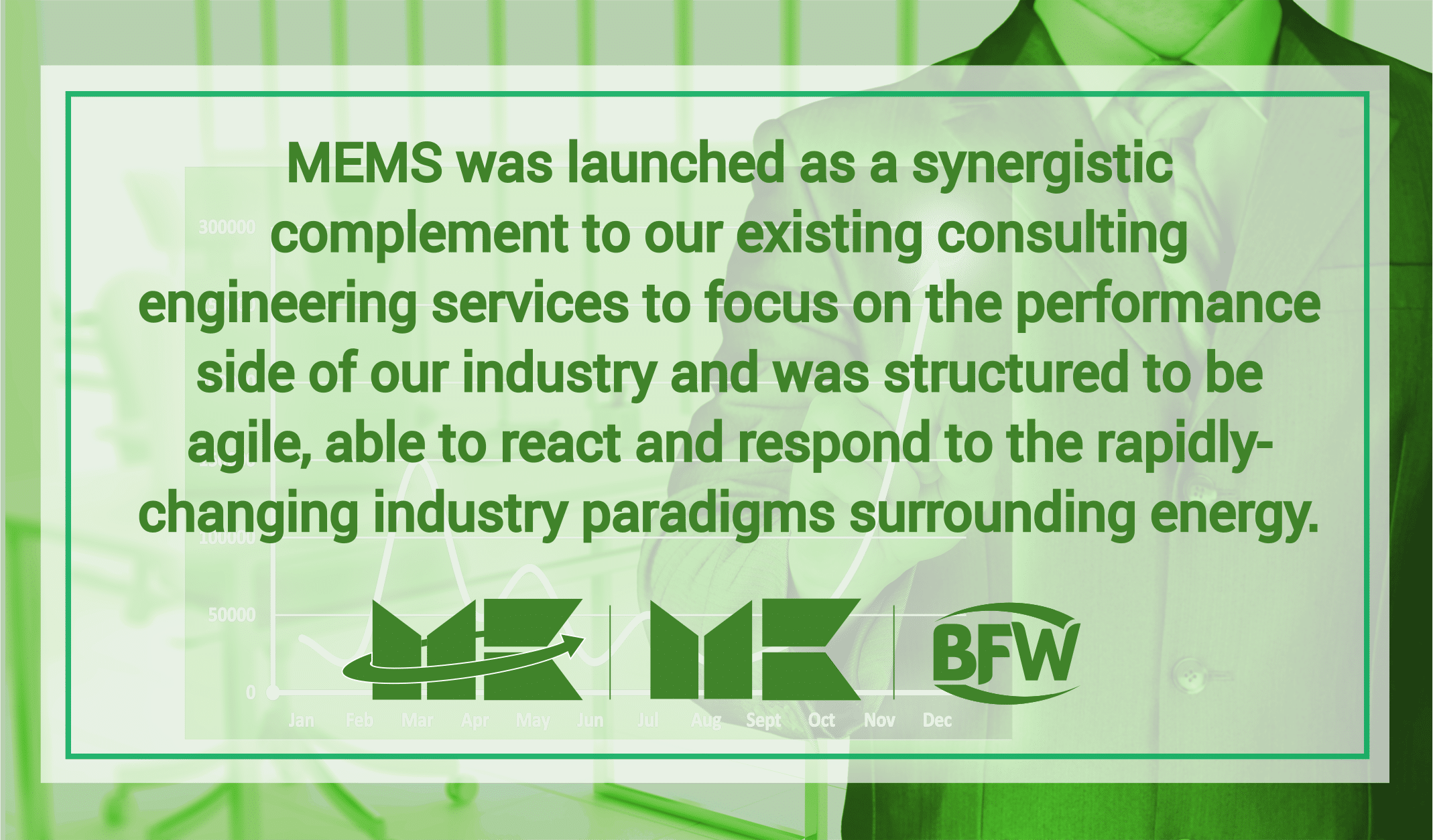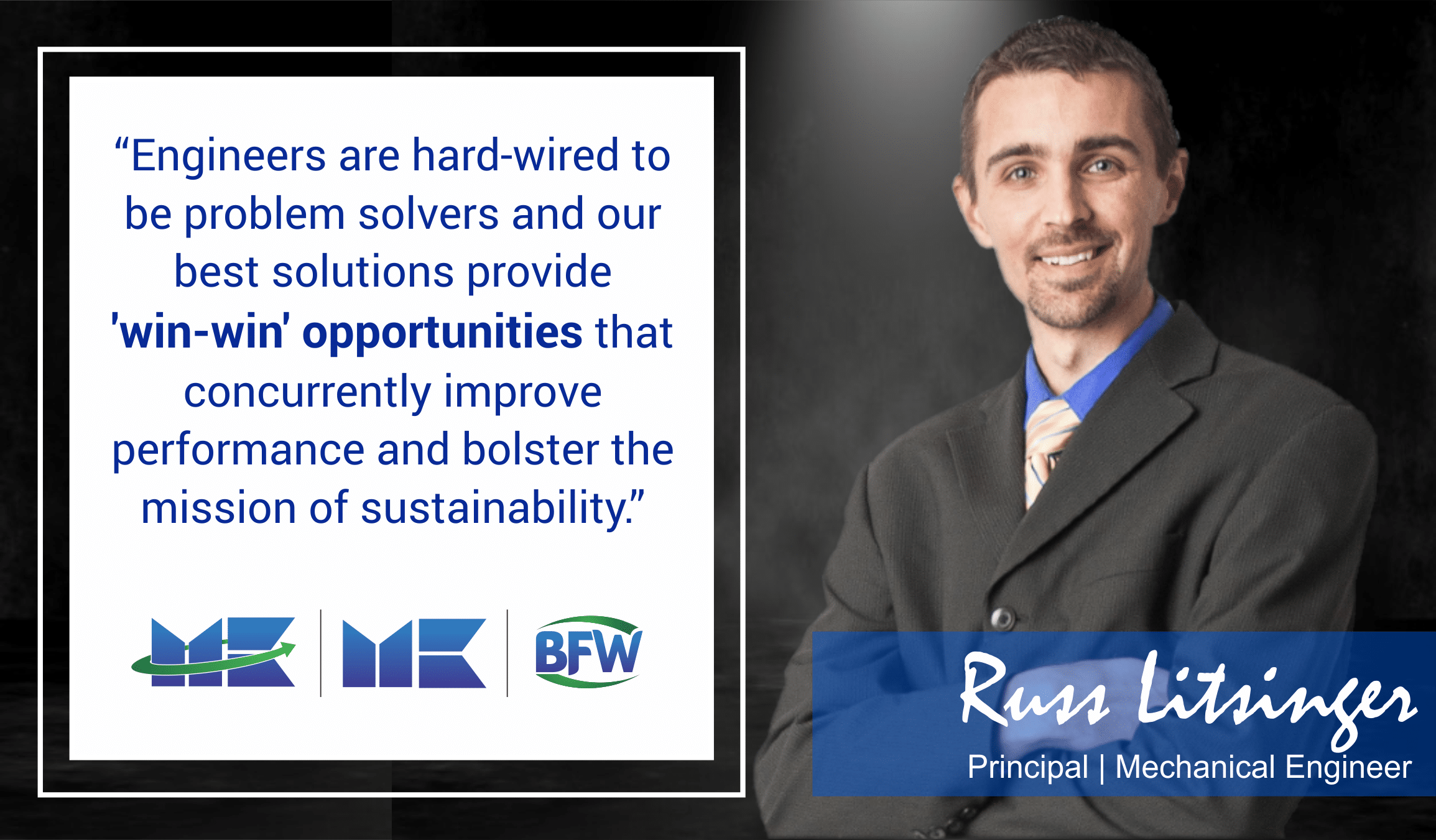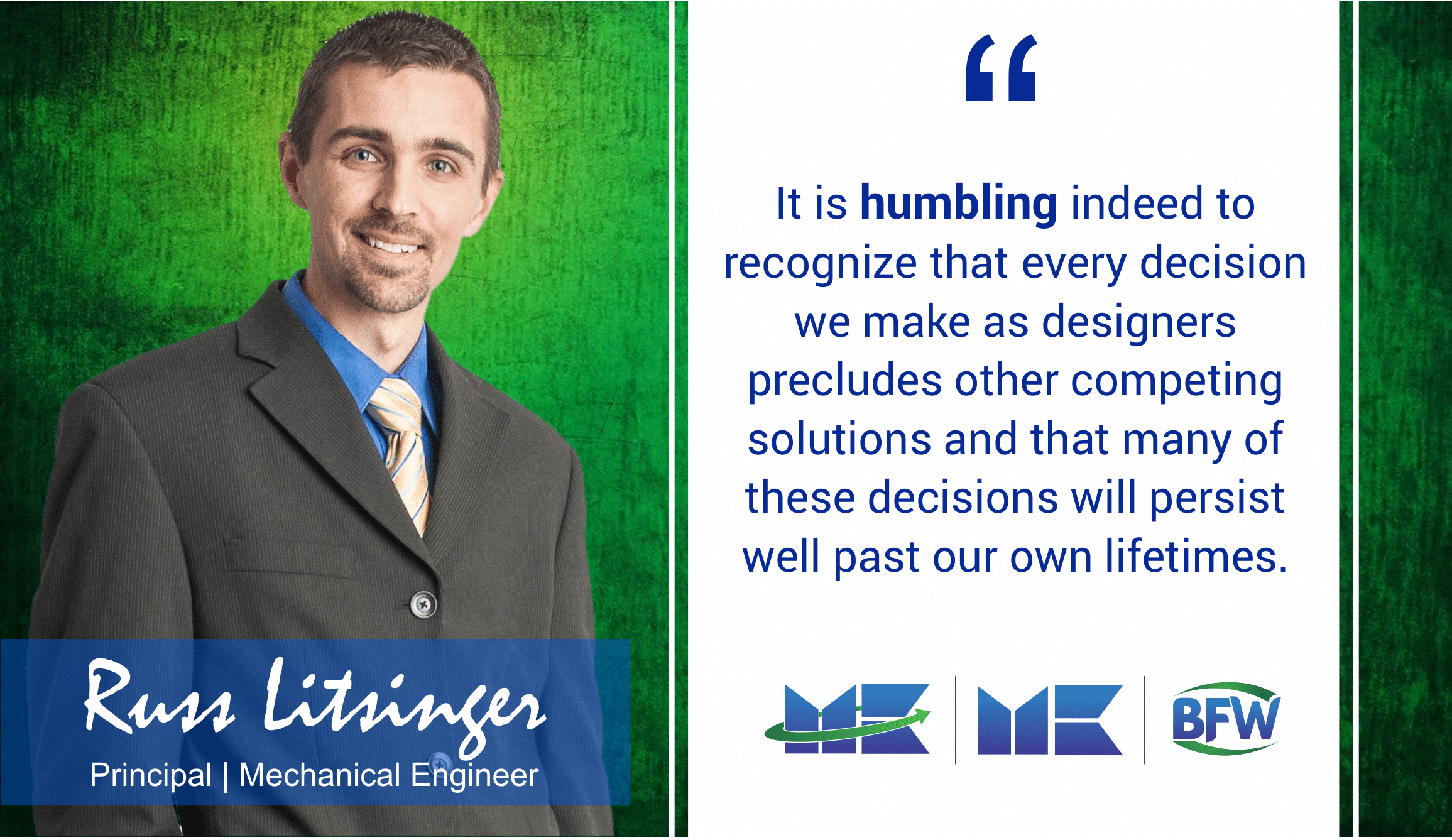Our Three Pillars of Sustainability
You can’t say you have an interest in your community without also committing to having an interest in the environment; the two ideas are inseparable. Healthy people need healthy buildings that are constructed in an economical and eco-friendly manner. Once they’re built, they need to remain beacons of mindful engineering and construction.
Sustainability doesn’t end at a blueprint. It’s a commitment that lasts forever. This way of thinking isn’t simple and that’s why we developed Marcum Energy Management Solutions (MEMS) to give us a dedicated section of our firm to brainstorm and pioneer technologies and concepts that exceed our community’s standards for healthy buildings.
Marcum Energy Management Solutions & Its Three Pillars
We spoke to Russ Litsinger, Principal/Mechanical Engineer, who has a lot to say about sustainability. He and his team break down the concept into three principles, which he refers to as pillars.
“We shape our buildings, thereafter they shape us.” That’s a quote by Winston Churchill that Russ lives by. It embodies his understanding of engineering’s impact on society. For this reason, engineering can take a community both ways; backward or forward. As engineers, it’s our responsibility to ensure we move forward. In 2012, we asked Russ to spearhead what is now known as MEMS. He hit the ground running and hasn’t stopped.
“After working as a Project Manager with Marcum Engineering for seven years, I was humbled to be chosen to head-up Marcum Energy Management Solutions (MEMS) in April of 2012.

MEMS was launched as a synergistic complement to our existing consulting engineering services to focus on the performance side of our industry and was structured to be agile, able to react and respond to the rapidly-changing industry paradigms surrounding energy.
Our primary mandate is to assist our clients in long-term energy management master planning and strategy and successfully executing projects which improve their operational efficiency.
I’ve told folks that if we were to make a bumper sticker for what MEMS does it would say, helping our clients make the business case for energy efficiency.”
Russ hits the nail on the head. Sustainability, in practice, is different than sustainability as an abstract. Most, if not all, decisions a client makes about a project need to make fiscal sense. MEMS is our way of crunching those numbers.
Let’s explore the three pillars of sustainability that Russ believes drive the overall concept.
Pillar 1: Sustainability in Mission
Russ explains the pursuit of mission. “Regardless of the industry, every organization has a higher social goal it serves and an aspirational purpose for its existence.”
He explains that the definition of sustainability has changed much in the last few decades. “this idea of sustainability has taken on an increasingly nuanced definition in our time which is more broadly defined in ‘Our Common Future’ as development which, ‘…meets the needs of the present without compromising the ability of future generations to meet their own needs.”
To put it simply, the mission of sustainability, in modern times, sees further into the future, helps many more people, and is more concerned with the community than the enterprise.

Yet, Russ is quick to point out that the mission of sustainability, though overwhelmingly for the greater good, is still profitable when done right. “Engineers are hard-wired to be problem solvers and our best solutions provide ‘win-win’ opportunities that concurrently improve performance and bolster the mission of sustainability. We seek to look past the issue at-hand to find solutions that will simultaneously improve long-range operational performance and efficiency.”
As Peter Drucker, a famous educator and author once said, “Every single social and global issue of our day is a business opportunity in disguise.”
Pillar 2: Sustainability in Conservation
The National Geographic Society defines conservation as, “the act of protecting Earth’s natural resources for current and future generations.” Thus our best engineering solutions are structured to benefit not only us but also our children and grandchildren.
Russ considers the modern-day engineer as a steward of good engineering, which is to say, they have a true responsibility to make the kinds of decisions that will uphold a high (healthy) standard of living far into the future.
“It is humbling indeed to recognize that every decision we make as designers precludes other competing solutions and that many of these decisions will persist well past our own lifetimes.

On a very practical level this means if we can use less of something or evoke less of an overall negative environmental impact by choice of materials, systems, or controls and still achieve fundamentally the same result, this is a net-benefit. Thus, things like leveraging resources that are naturally more prevalent in our area or cause less harm to the environment in their production and eventual disposal are prudent choices, particularly when they do not unduly impact the project outcome.
Historical conservation expert Paul Drury sums up this responsibility well when he describes conservation as, ‘… a philosophical approach, that seeks first to understand what people value about a … building or place beyond its practical utility and then to use that understanding to ensure that any work undertaken does as little harm as possible to the characteristics that hold or express those values.’”
Pillar 3: Sustainability in Renewal
Russ loves his quotes and so do we; if a great mind has said something that still resonates today, then that statement must be universal in some sense. When contemplating renewal Russ thinks of famous architect William McDonough’s words, “…the best way to reduce any environmental impact is not to recycle more, but to produce and dispose of less.”
Russ takes from this 4 foundational principles of renewal:
- Do no harm – When faced with comparative design options, using the least environmentally-impactful solution that is economically-justifiable is a prudent investment, both from a financial and societal perspective.
- Design for resiliency – Designing solutions that are inherently robust, maintainable, and readily adaptable present future generations with the opportunity to adaptively reuse or renew systems as opposed to wholesale demolition and replacement and its consequent financial and environmental impact.
- Consider reversibility and emerging technologies – Designing systems that can be readily removed and recycled once far-superior alternatives emerge is a judicious approach.
- Use of materials that are rapidly renewable, readily recyclable and/or regionally available – When considering alternatives, employing materials which have the lowest long-term environmental impact is a sensible approach.
- Begin with the end in mind – All facilities and their attendant components eventually fail or become obsolete. Thus we need to consider this reality when designing for the future.
The Three Pillars Uphold Our High Standards
Russ has a lot more to say in his approach to sustainability. In the future, we’ll publish a few more articles dedicated to each pillar with an in-depth look at how we approach each one, make it an integral part of our culture and decision making, and give some examples of this approach in action.
At BFW/Marcum/MEMS we invest heavily in continuous education and process improvements to remain at the forefront of emerging technologies to assure we retain the core competencies necessary to design for the future. MEMS is our way of integrating long-term, healthy practices into every single decision we make.

Recent Comments